The idea of growing microgreens may have crossed your mind for a small business idea or adding to your health. If so, you'll need to consider the price. In this article, we will answer if microgreens are expensive to grow and just what that price is.
Consistently growing microgreens can become expensive when you factor in new soil and seeds needed for every harvest. However, it only costs about $3.00 to $5.00 to grow a single tray of microgreens, including soil, seeds, water, and electricity needed to grow this single tray.
Consequently, how expensive it is to grow microgreens depends heavily on how much and how often you plan to grow them.
Now you know the price of growing microgreens can fluctuate. Keep reading as we detail the expenses involved in growing microgreens. We will answer if it is cheaper to grow or buy microgreens and more.

What Expenses Are Included In Growing Microgreens?
Microgreens are vegetables, foliage, and legumes that are harvested shortly after they sprout. These greens can come from various plants, such as baby spinach, kale, beetroot, broccoli, chia, and more.

Just like there are a variety of microgreens to choose from, there are various ways to grow them. The seeds and the growing method you use can cause the cost of growing microgreens to fluctuate.
Expenses involved in growing microgreens include the following:
- Type of microgreens
- Soil vs. hydroponics
- The size and placement of your garden
- Single item purchases vs. kits
- Costs of electricity and water
Let's break down some costs related to each of these expense categories.
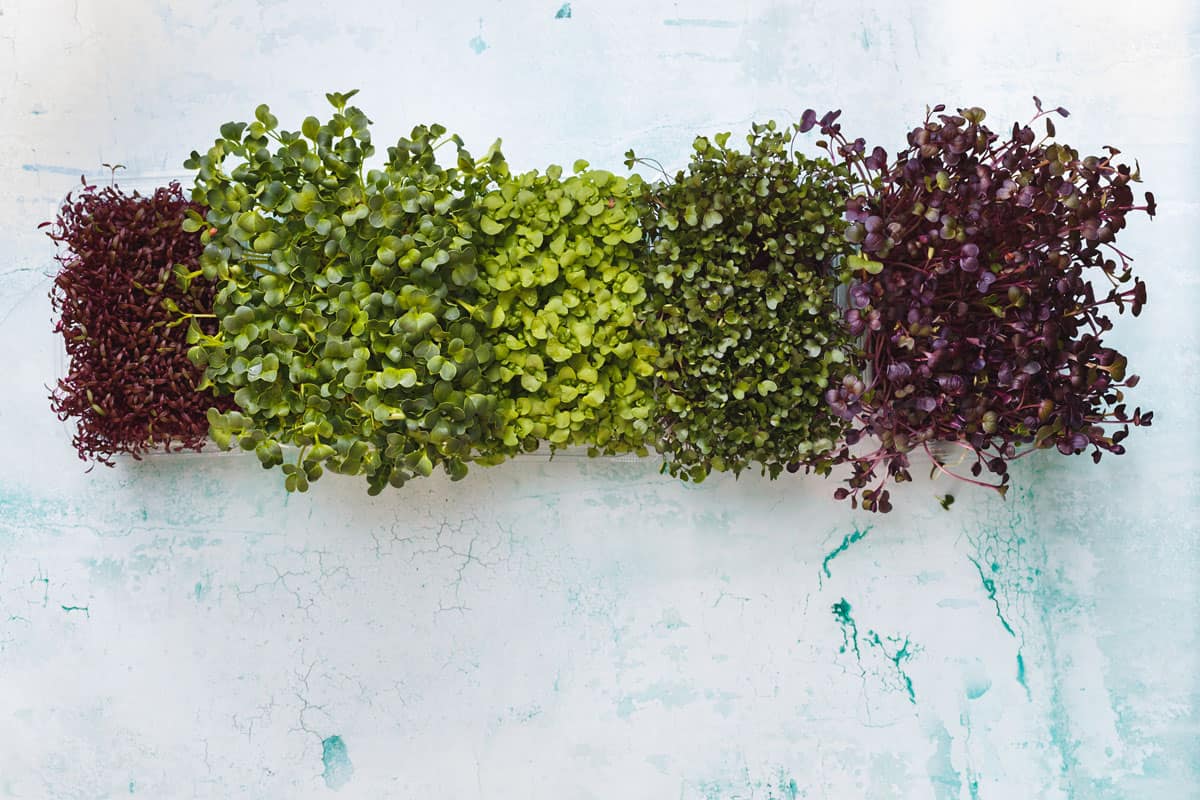
Type Of Microgreens
The start of growing microgreens is deciding which type you want to grow. One example is the seed for radishes, which typically run cheaper than broccoli seeds. If you intend to grow a variety of microgreens, you may select a variety pack with more seeds at a higher cost.
Amazon offers a variety pack of seeds.
Soil VS. Hydroponics
Traditionally, microgreens are grown in soil. However, you can also grow them in water or hydroponically. If you are growing in soil, you will factor in the cost of the soil you use or the tray or growing container.
In a hydroponic setup, factor in the medium, the cost of water, and the growing container. If you want to simplify a hydroponic setup, you can purchase a hydroponic grow system to use over and over.
You can find a mason jar hydroponic growing system on Amazon.
The Size And Placement Of Your Garden
If you are growing microgreens for yourself, you may only need to grow a single tray, and placement may be by a sunny window. If you are growing microgreens on a larger scale to sell, you will require more space and supplies.
In a more extensive growing operation, you will factor in the costs of multiple growing containers, grow lights and increased costs of water and seeds.
Amazon offers grow lights here.
Single Item Purchases VS. Kits
You can purchase everything you need to grow microgreens separately or go for grow kits that include everything you need. You will have to get your seeds, soil, and growth container or medium for individual purchasing.
Each harvest requires new supplies. To simplify your project, you can purchase growth kits. Using a new growth kit will eliminate the work of sterilizing your supplies with each harvest. These kits range in price depending on the size and what type you get.
You can purchase a microgreens growing kit here on Amazon.
Costs Of Electricity And Water
If you are growing microgreens indoors with grow lights, your cost of electricity per harvest will be a bit higher. A hydroponic setup may require more water, increasing the cost of this resource.
You can decrease these costs by growing microgreens in natural light or reusing water from other sources, such as using your cooking water. Additionally, there are self-watering growing containers you can invest in.
Amazon offers a self-watering grow kit here.
Is It Cheaper To Buy Or Grow Microgreens?
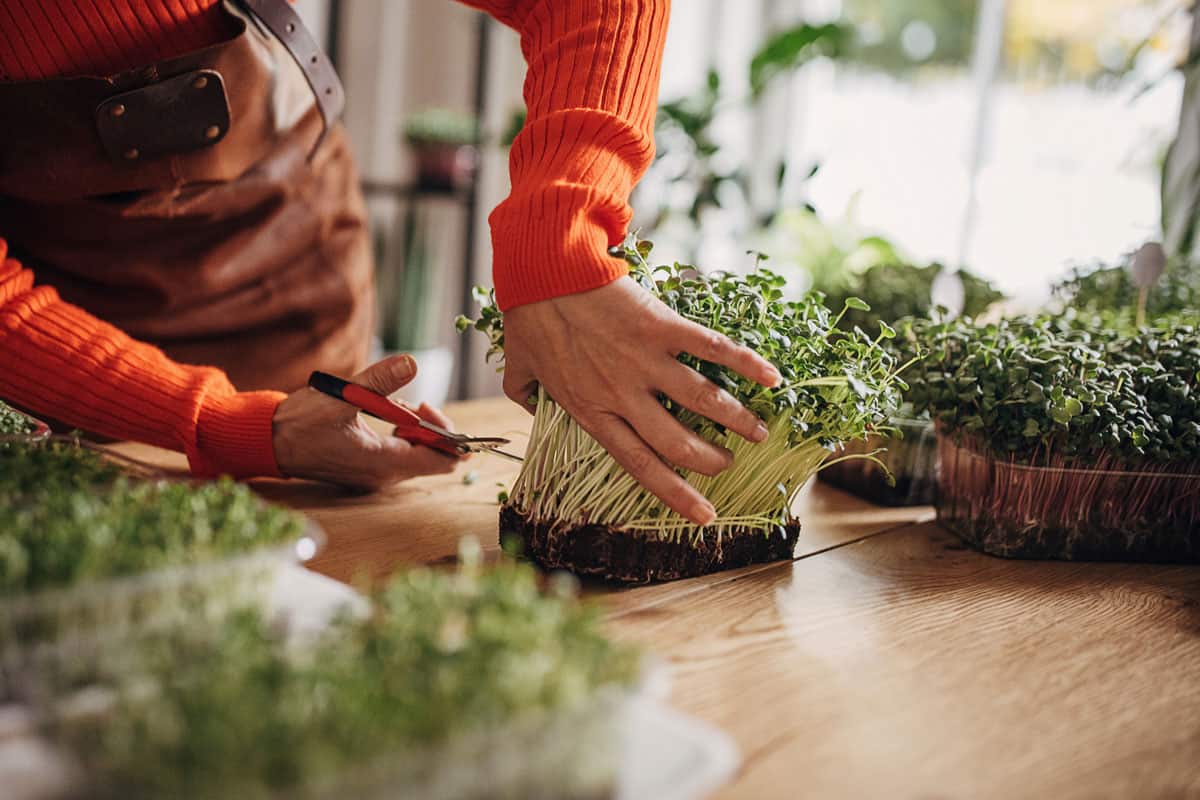
Microgreens have become popular due to their nutritional content and added flavor they bring to a dish. They are sold in your local grocery store or farmer's market. While they are easily accessible, it is cheaper to grow them yourself.
A 2oz bag of microgreens in the store can cost you $5.00 or more. A single tray of microgreens grown at home can provide you with about 8-12oz. Remember, the cost to grow a tray runs you only $3-$5.
Buying prepackaged microgreens can cost up to 10x more than growing your own. So, if you plan to consume these greens regularly, you would save money growing them yourself.
How Much Money Do Microgreens Farmers Make?
If you have committed to growing microgreens, you might be considering starting up a small business of your own. You know how much a small bag of microgreens goes for in the average market, so it is not a fruitless consideration.
On average, microgreens farmers bring in $20-30 per tray of microgreens. If it costs you $3-5 per tray, you can easily cover your growing cost and make a little side money.
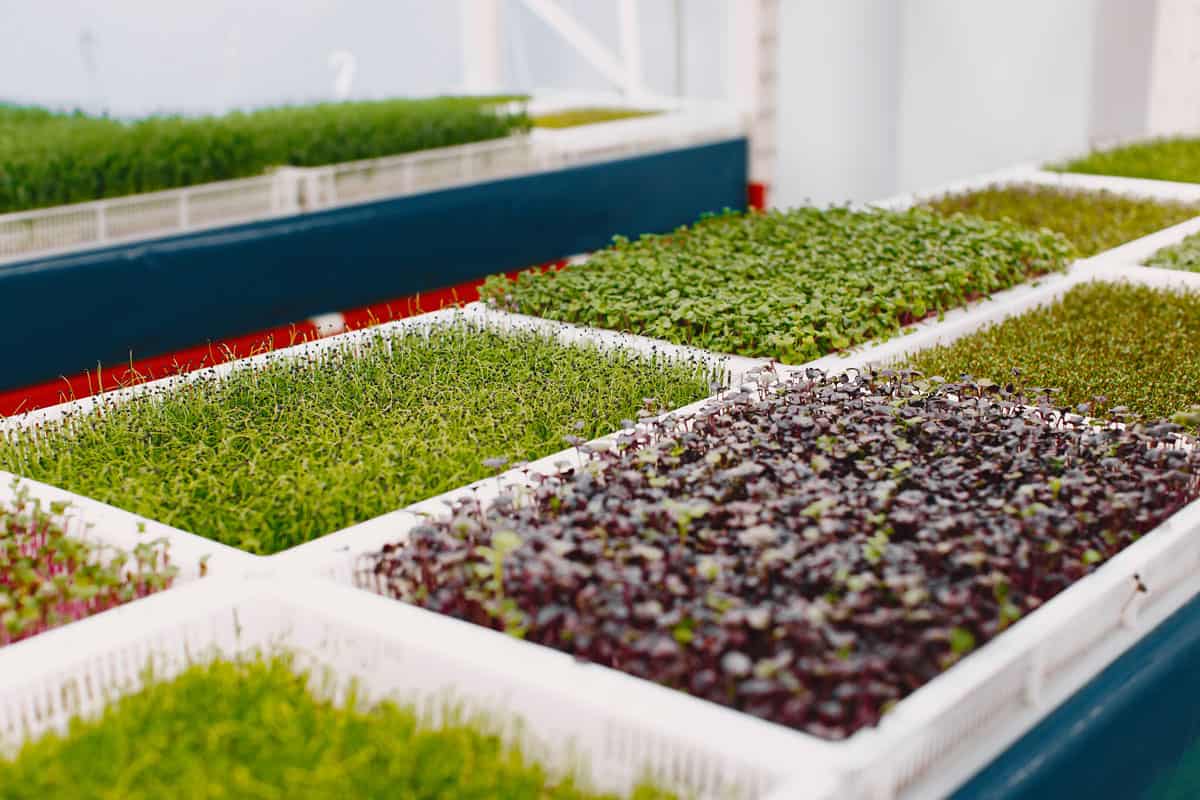
Some independent microgreens farmers in urban areas can make $12,000-13,000 annually. Larger profits certainly depend on how you market your microgreens and the cost of the supplies you use.
Sometimes, farmers will team up with farm collectives to encourage marketing. Additionally, growing microgreens from cheaper species of seeds or plants known to be denser can help you increase yields and profits.
Do Microgreens Regrow After Cutting?
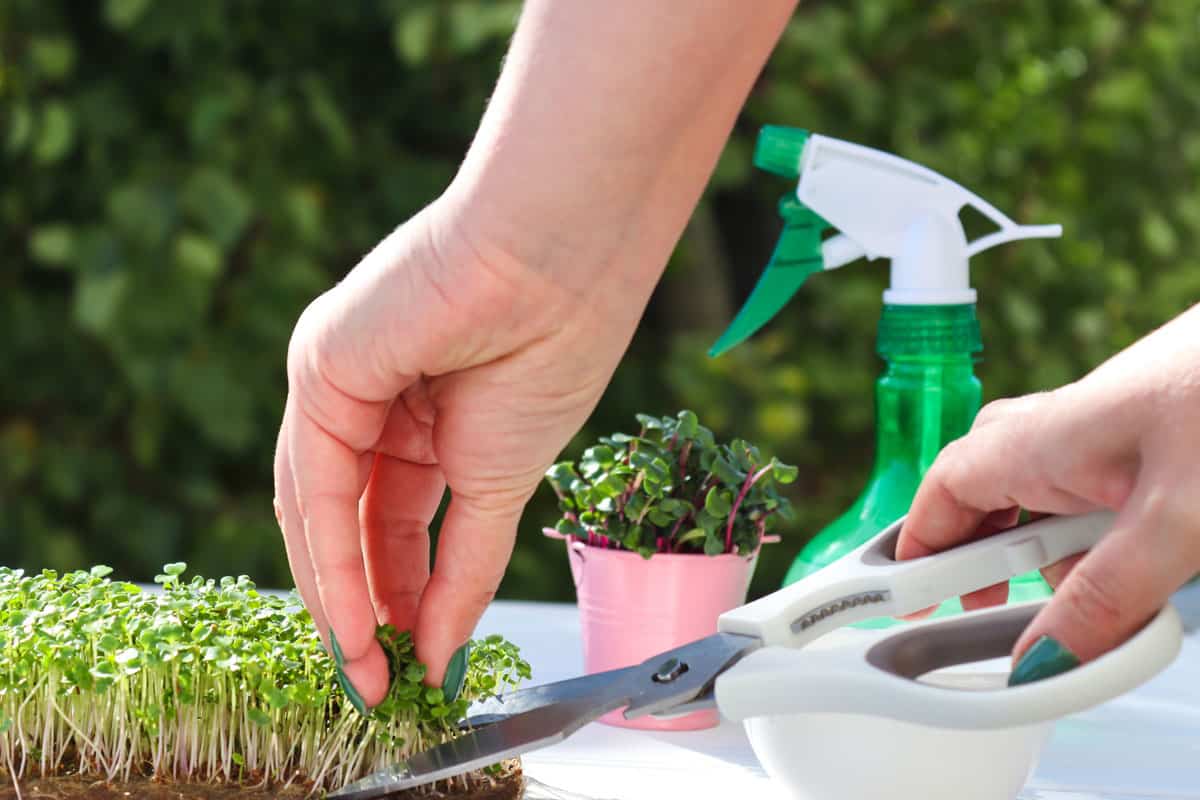
In almost all cases, microgreens will not regrow after cutting. This is why your seeds become a higher cost in a microgreens operation. You will need new seeds for each harvest of these plants.
In very few instances, certain species of microgreens have a chance of regrowing. Peas, beans, and kale offer a stronger root system, increasing the chances that they will regrow. However, this is not a guarantee.
Additionally, some gardeners will harvest microgreens without cutting off the lowest leaf. This leaves a chance that they will see re-grow. Again, this isn't a guarantee, and if re-growth does happen, the new growth may be stunted or change the taste.
Read more on our blog post, "How To Grow Microgreens Indoors."
How Many Times Can You Reuse Soil For Microgreens?
Unlike seeds, you can reuse the soil you used to grow your microgreens. Reusing soil can help to reduce the costs of supplies. However, there is a protocol you need to follow to ensure you will get the most out of your soil for the next harvest.
You must compost your soil for 3-15 days in 131-degree temperatures. If you are not turning your compost, you will be on the higher end of days needed for composting.
Composting will break down any roots, seeds, or other growths left behind by your batch of microgreens. Additionally, this method will add nutrients back into your soil.
Non-composted soil will grow mold or carry pathogens to your next batch of microgreens. Skipping this step will result in lost crops and plenty of frustration. However, if composted correctly, you can enjoy one sustainable way of microgreens farming.
To be extra vigilant regarding mold and pathogens, you can also sterilize your soil at home. To prep for sterilization, you will sift through the soil, removing as much organic material as possible.
Next, your sifted soil can go into a metal baking pan and the oven. You can sterilize your soil at 350 degrees for about 2.5 hours. Some organic material may have been left behind if you notice smoke coming from your soil during this process. The smoke will leave behind a smell, but your soil will still be sterile and ready to use.
In Summary
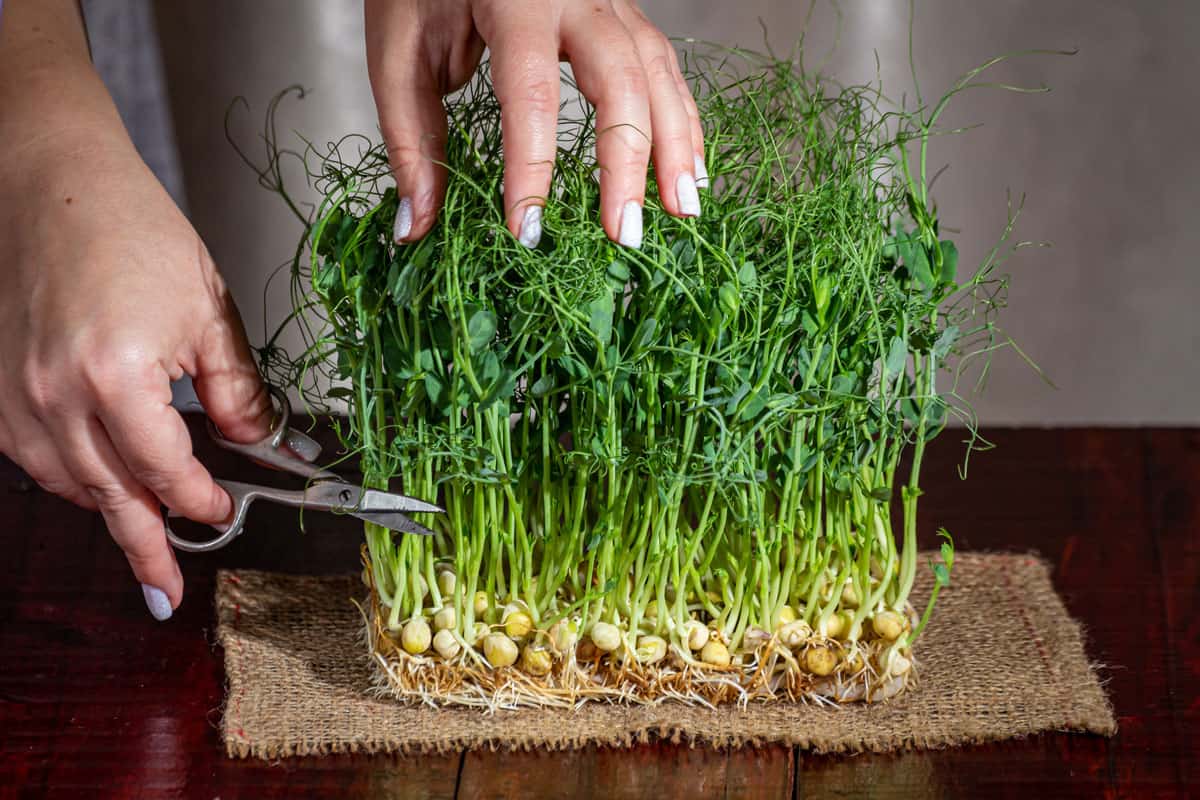
The expense of growing microgreens has many variables, including which seeds you are using, the growth method you select, and where you are getting your supplies. We hope you found this article helpful when it comes to the cost of growing microgreens.
Are you searching for other fast-growing plants? Have a look at our blog post,





